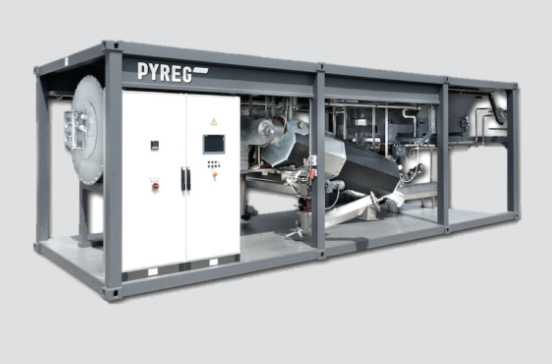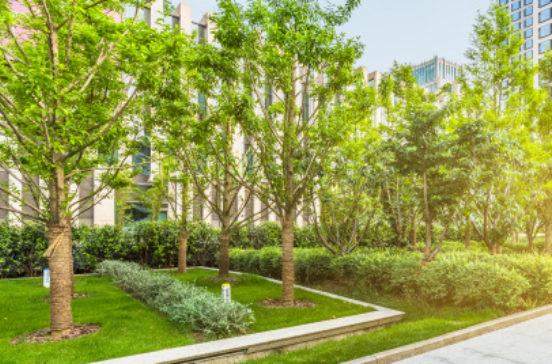BIOCHAR
Key ingredient for a sustainable economy.
Biochar – a negative Emissions Technology (NET)
with countless application possibilities

Feed
Additive

Soil
Additive

Filling material
in production

Building material
additive
The PYREG technology carbonizes your residual materials into pollutant-free, highly porous biochar. Unlike rotting or incineration, this process does not release the carbon contained in the residual materials as CO2, but binds it stably in the biochar and thus removes CO2 from the atmosphere.
This makes the production of biochar one of the Negative Emissions Technologies (NET) urgently needed for climate protection. When this biochar is permanently incorporated into so-called carbon sinks (e.g. soil, building materials, asphalt), the sustainable storage of CO2 is successful in the long term.
During this process, carbon is not released into the air as CO2. Instead, it is stabily bound in the biochar and thus removed from the atmosphere.
Markets need CO2-reducing products, especially in this time of climate change.
Depending on the processing stage, biochar can be used in a wide range of applications:
Biochar –
as a feed additive
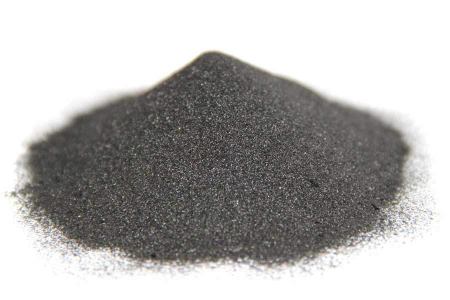
Advantages
Biochar is used in silage, as animal feed, in litter, for manure treatment or as a compost additive. Biochar improves animal health, reduces unpleasant odors, optimises the quality of fertiliser and reduces losses of nutrients that are harmful to the climate and the environment.
- Increased vitality, feed efficiency, feed intake and weight
- Strengthening of the immune system and decrease in mortality rate
- Increase in milk quality in cows due to improved udder health
- Reduction of diarrhea and diseases of the hooves and footpad
- Increase in egg production and egg quality in poultry
- Improvement of meat quality
- Significant increase in milk ingredients
- Improved stable hygiene and reduced odor pollution
- Enormous odor reduction of the liquid manure
- Reduction of costs for medicines and veterinarians
Biochar –
as a soil additive
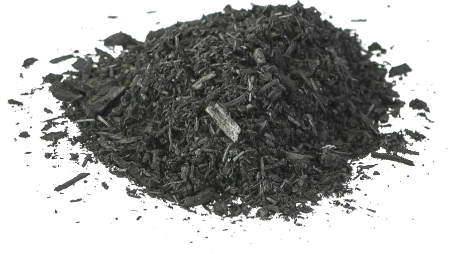
Advantages
An intact humus layer stores nutrients and water as well as large amounts of the greenhouse gas CO2. Biochar facilitates this process. With a surface of 200-500 m² per gram and a high porosity, biochar can absorb up to five times its own weight in water and the nutrients contained in it. The “green carbon” remains stable during decomposition and does not rot.
As a result, farmers can improve the quality of soil with biochar, save money for fertilisers and obtain additional credits from emission certificates.
- It improves the quality of soil, saves money for fertilizers and provides additional credits from emission certificates
- Nitrate loads in soil and groundwater are considerably reduced
- Soil acidification is reduced
- Humus build-up is increased
- Excellent capacity to store nutrients and water
- Plants withstand extreme weather conditions, such as weeks of drought stress and subsequent irrigation is significantly improved
- Biochar can significantly improve the biogas yield
- Improves the stress resistance of urban trees
Biochar –
as a filling additive
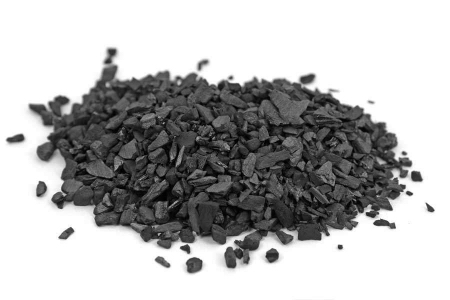
Advantages
The possible uses of biochar (pyrolytically produced biomass carbon) are extremely varied. It also has numerous positive effects when used in industrial processes. In the cement industry, biochar can be used as an additive/replacer as well as in the production of building materials.
Last but not least, biochar is beneficial because it substitutes fossil fuels and thus improves the CO2 footprint (for more reading: Weber 2016, Biokohle. Herstellung, Eigenschaften und Verwendung von Biomassekarbonisaten, p. 279–282 [German]).
 Surface
Surface
Up to
300 m²/g
 Nutrient Content
Nutrient Content
Up to
905g/Kg
 Amount of its own
Amount of its ownweight in water
Absorbs
5 TIMES
Carbonization drives sustainability
and enables circularity
Biochar as a Soil conditioner
Biochar has been rediscovered in recent years as a natural soil improver. Already thousands of years ago, South American Indians knew about the highly fertile effect of “terra preta” (black earth). Terra preta refers to fertile, dark soils in the Amazon region, which were created by pre-Columbian Indians thousands of years ago. Nutrient-poor soil was enriched with a composted or fermented mixture consisting of plant residues, manure and human feces, as well as charcoal from the hearths.
However, biochar is not a fertiliser if used alone. It is highly porous and has a surface area of up to 300m² per gram. Biochar acts as a sponge that can absorb up to five times its own weight. It stores water and nutrients and allows microorganisms to settle in its pores. This property is also described by the absorption capacity (AC). It depends on both the pyrolysed biomass and the pyrolysis conditions of the carbonization process.
To achieve the same effect as in the Amazon region, however, the biochar first needs to be ‘activated’, meaning it must be enriched with nutrients and soil organisms, for example during composting. If pure biochar is introduced into the soil, it withdraws the water and the substances dissolved in it from its surroundings and thus has exactly the opposite effect.
Cascading use of biochar
The cascading use of biochar in animal husbandry and fertilizer management, where the absorption capacity of biochar plays an important role, is also interesting from an economic point of view.
Stage 1: Silage
At the beginning, biochar is added to the silage, which prevents the formation of mycotoxins. At the same time, pesticides are fixed and the formation of butyric acid is prevented, resulting in cleaner fermentation and a noticeable improvement in feed quality.
Stage 2: Digestive process
The biochar then enters the feed via the silage, enhancing digestion of the animals. The feed intake is increased, which results in an increase in weight. This also reduces the formation of greenhouse gases.
Stage 3: Stable hygiene
Biochar is added to the litter, thus binding the liquid nutrients and reducing ammonia emissions. It helps prevent putrefaction, which in turn improves stable hygiene. After just a few days, unpleasant odors are noticeably reduced. What’s more, stables do not have to be mucked out so often, thus saving time and material.
Stage 4: Liquid manure
Biochar can also be mixed into the liquid manure, which binds volatile nutrients and improves the microbial environment. This reduces nutrient losses, which improves the fertilizing effect of the liquid manure. In addition, the liquid manure becomes almost odorless.
Stage 5: Farmland
After absorption of the manure (solid-liquid separation), the solids are composted together with the stable bedding, which produces valuable black earth, thanks to the high proportion of biochar. The incorporation of this black soil and the stabilized liquid manure into the soil improves the water retention capacity, the filter performance and the aeration of the soil, which results in higher fertility. Soil acidification is prevented and the leaching of fertilizers and pesticides into groundwater is reduced.
Biochar used in industrial processes
The possible uses of biochar (pyrolytically produced biomass carbon) are extremely varied. It also has numerous positive effects when used in industrial processes. Biochar can be used as an additive/replacer as well as in the production of building materials. The final use of the biochar determines the durability of the carbon sink, an essential requirement for the approved effectiveness of a Negative Emission Technology (NET). For example, for soil applications, a scientifically based annual decay must be assumed. However, if the biochar is used as a sand replacement in concrete, for example, this is not necessary because the biochar cannot oxidize in the absence of air.
It is beneficial because it substitutes fossil fuels and thus improves the CO2 footprint (for more reading: Weber 2016, Biokohle. Herstellung, Eigenschaften und Verwendung von Biomassekarbonisaten, p. 279–282 [German]).

